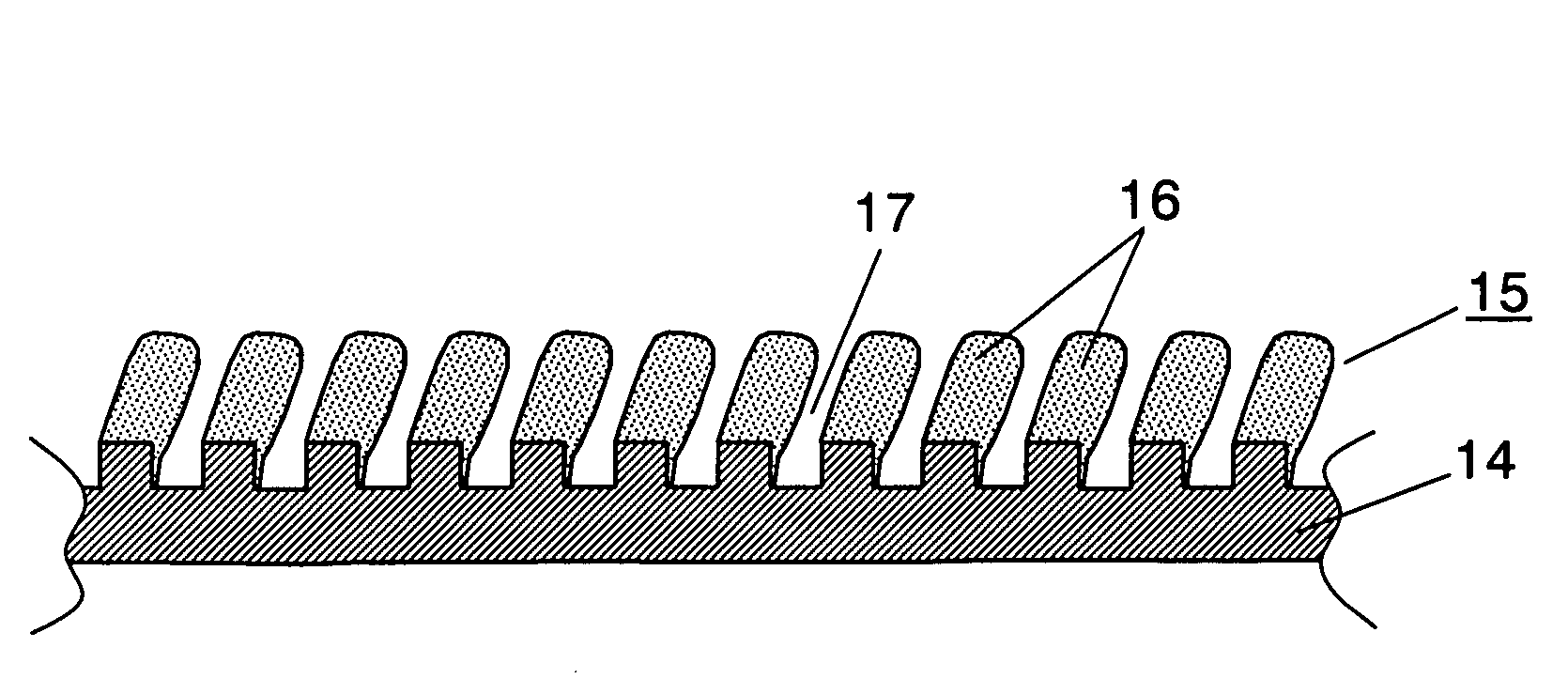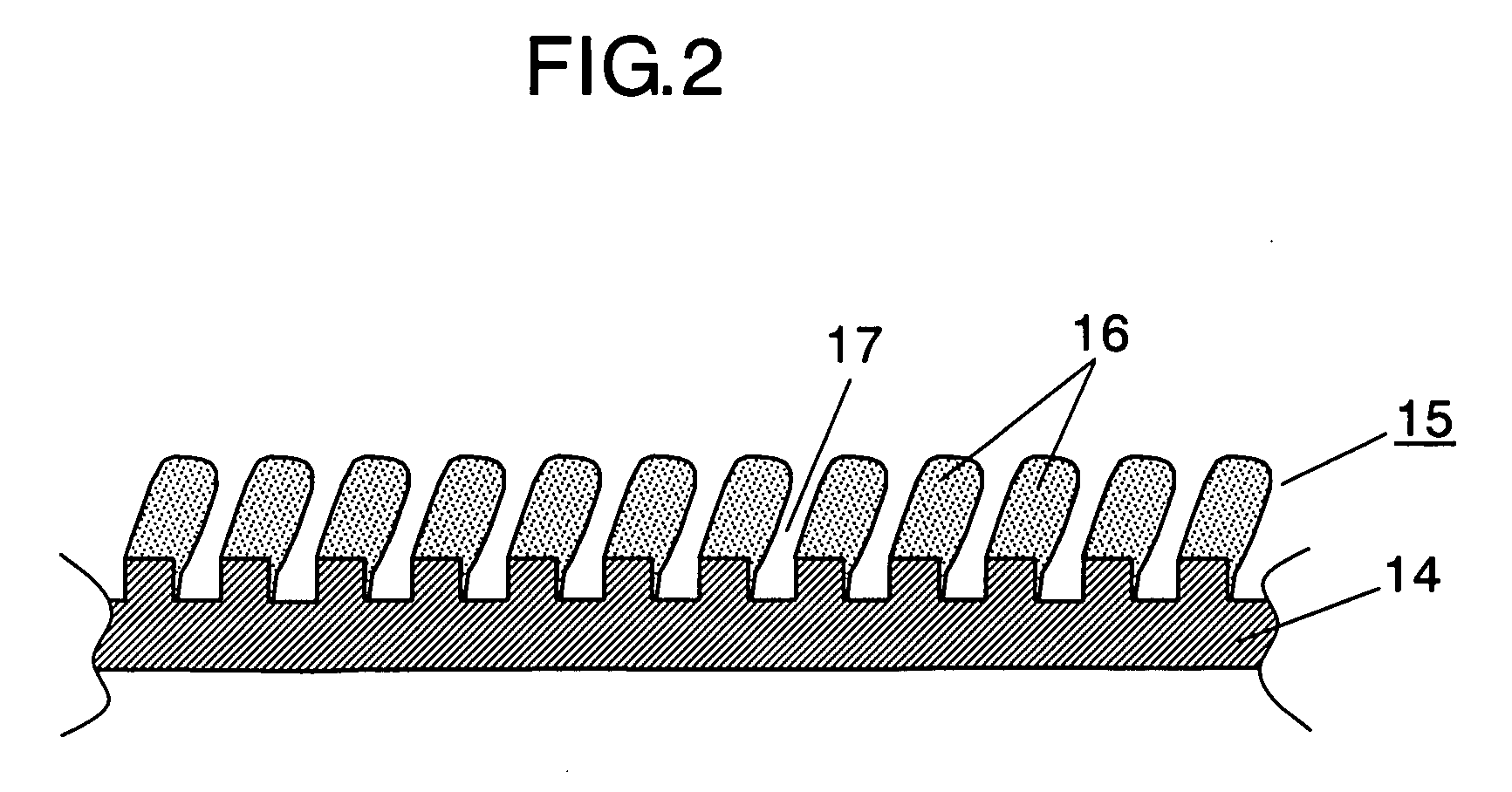Manufacturing method of negative electrode for nonaqueous electrolytic rechargeable battery, and nonaqueous electrolytic rechargeable battery using it
- Summary
- Abstract
- Description
- Claims
- Application Information
AI Technical Summary
Benefits of technology
Problems solved by technology
Method used
Image
Examples
embodiment
[0028]FIG. 1 is a sectional view of a nonaqueous electrolytic rechargeable battery in accordance with an exemplary embodiment of the present invention.
[0029]In FIG. 1, a cylindrical nonaqueous electrolytic rechargeable battery (hereinafter referred to as “battery”) has electrode group 4 where positive electrode 1 and negative electrode 2 are wound via separator 3. Positive electrode 1 has positive electrode lead 8 made of aluminum, for example, and reduces lithium ions during discharge. Negative electrode 2 faces positive electrode 1, and has negative electrode lead 9 made of copper, for example, at its one end. Insulating sheets 10 and 11 are mounted to the upside and downside of electrode group 4, the other end of positive electrode lead 8 is welded to sealing plate 6, and the other end of negative electrode lead 9 is welded to the bottom of battery case 5 and is inserted into battery case 5. Nonaqueous electrolyte (not shown) for conducting lithium ions is injected into battery c...
example 1
[0096](1) Production of Negative Electrode
[0097](Production of Negative Electrode Precursor)
[0098]As a negative electrode active material capable of storing and discharging lithium ions, silicon oxide (SiOx) that is produced in the following method and has CNF grown on its surface is used.
[0099]One part-by-weight of nickel nitrate (II) 6 hydrate (reagent chemicals manufactured by Kanto Chemical Co., Inc.) is added to 99 parts-by-weight of SiO powder (manufactured by Wako Pure Chemicals, Ltd.), and they are carried on the surface of the SiO particles. Here, the SiO powder is previously crushed and classified to have an average particle diameter of 10 μm. Then, they are heated to 550° C. under helium gas atmosphere, and the nickel nitrate is reduced to Ni element.
[0100]Mixed gas of 50 vol % of hydrogen gas and 50 vol % of methane gas is then substituted for the helium gas. Then, the SiO particles are held at 550° C. for 10 minutes to grow the CNF on the surface of the SiO particles.
[0...
example 2
[0120]A nonaqueous electrolytic rechargeable battery of sample 2 is produced by a method similar to that of example 1. In sample 2, however, the temperature of nonaqueous electrolyte A in the reaction tank is set at 30° C.
PUM
 Login to View More
Login to View More Abstract
Description
Claims
Application Information
 Login to View More
Login to View More - R&D
- Intellectual Property
- Life Sciences
- Materials
- Tech Scout
- Unparalleled Data Quality
- Higher Quality Content
- 60% Fewer Hallucinations
Browse by: Latest US Patents, China's latest patents, Technical Efficacy Thesaurus, Application Domain, Technology Topic, Popular Technical Reports.
© 2025 PatSnap. All rights reserved.Legal|Privacy policy|Modern Slavery Act Transparency Statement|Sitemap|About US| Contact US: help@patsnap.com



